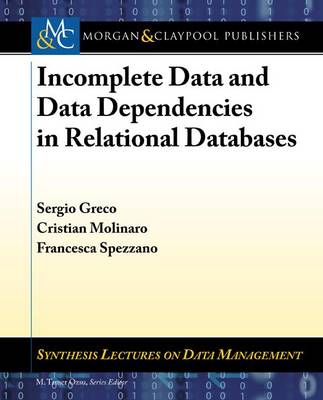Synthesis Lectures on Data Management
2 total works
The use of logic in databases started in the late 1960s. In the early 1970s Codd formalized databases in terms of the relational calculus and the relational algebra. A major influence on the use of logic in databases was the development of the field of logic programming. Logic provides a convenient formalism for studying classical database problems and has the important property of being declarative, that is, it allows one to express what she wants rather than how to get it.
For a long time, relational calculus and algebra were considered the relational database languages. However, there are simple operations, such as computing the transitive closure of a graph, which cannot be expressed with these languages. Datalog is a declarative query language for relational databases based on the logic programming paradigm. One of the peculiarities that distinguishes Datalog from query languages like relational algebra and calculus is recursion, which gives Datalog the capability to express queries like computing a graph transitive closure.
Recent years have witnessed a revival of interest in Datalog in a variety of emerging application domains such as data integration, information extraction, networking, program analysis, security, cloud computing, ontology reasoning, and many others. The aim of this book is to present the basics of Datalog, some of its extensions, and recent applications to different domains.
For a long time, relational calculus and algebra were considered the relational database languages. However, there are simple operations, such as computing the transitive closure of a graph, which cannot be expressed with these languages. Datalog is a declarative query language for relational databases based on the logic programming paradigm. One of the peculiarities that distinguishes Datalog from query languages like relational algebra and calculus is recursion, which gives Datalog the capability to express queries like computing a graph transitive closure.
Recent years have witnessed a revival of interest in Datalog in a variety of emerging application domains such as data integration, information extraction, networking, program analysis, security, cloud computing, ontology reasoning, and many others. The aim of this book is to present the basics of Datalog, some of its extensions, and recent applications to different domains.
Incomplete Data and Data Dependencies in Relational Databases
by Segio Greco, Cristian Molinaro, and Francesca Spezzano
Published 30 July 2012
The chase has long been used as a central tool to analyze dependencies and their effect on queries. It has been applied to different relevant problems in database theory such as query optimization, query containment and equivalence, dependency implication, and database schema design. Recent years have seen a renewed interest in the chase as an important tool in several database applications, such as data exchange and integration, query answering in incomplete data, and many others. It is well known that the chase algorithm might be non-terminating and thus, in order for it to find practical applicability, it is crucial to identify cases where its termination is guaranteed. Another important aspect to consider when dealing with the chase is that it can introduce null values into the database, thereby leading to incomplete data. Thus, in several scenarios where the chase is used the problem of dealing with data dependencies and incomplete data arises.
This book discusses fundamental issues concerning data dependencies and incomplete data with a particular focus on the chase and its applications in different database areas. We report recent results about the crucial issue of identifying conditions that guarantee the chase termination. Different database applications where the chase is a central tool are discussed with particular attention devoted to query answering in the presence of data dependencies and database schema design.
This book discusses fundamental issues concerning data dependencies and incomplete data with a particular focus on the chase and its applications in different database areas. We report recent results about the crucial issue of identifying conditions that guarantee the chase termination. Different database applications where the chase is a central tool are discussed with particular attention devoted to query answering in the presence of data dependencies and database schema design.

